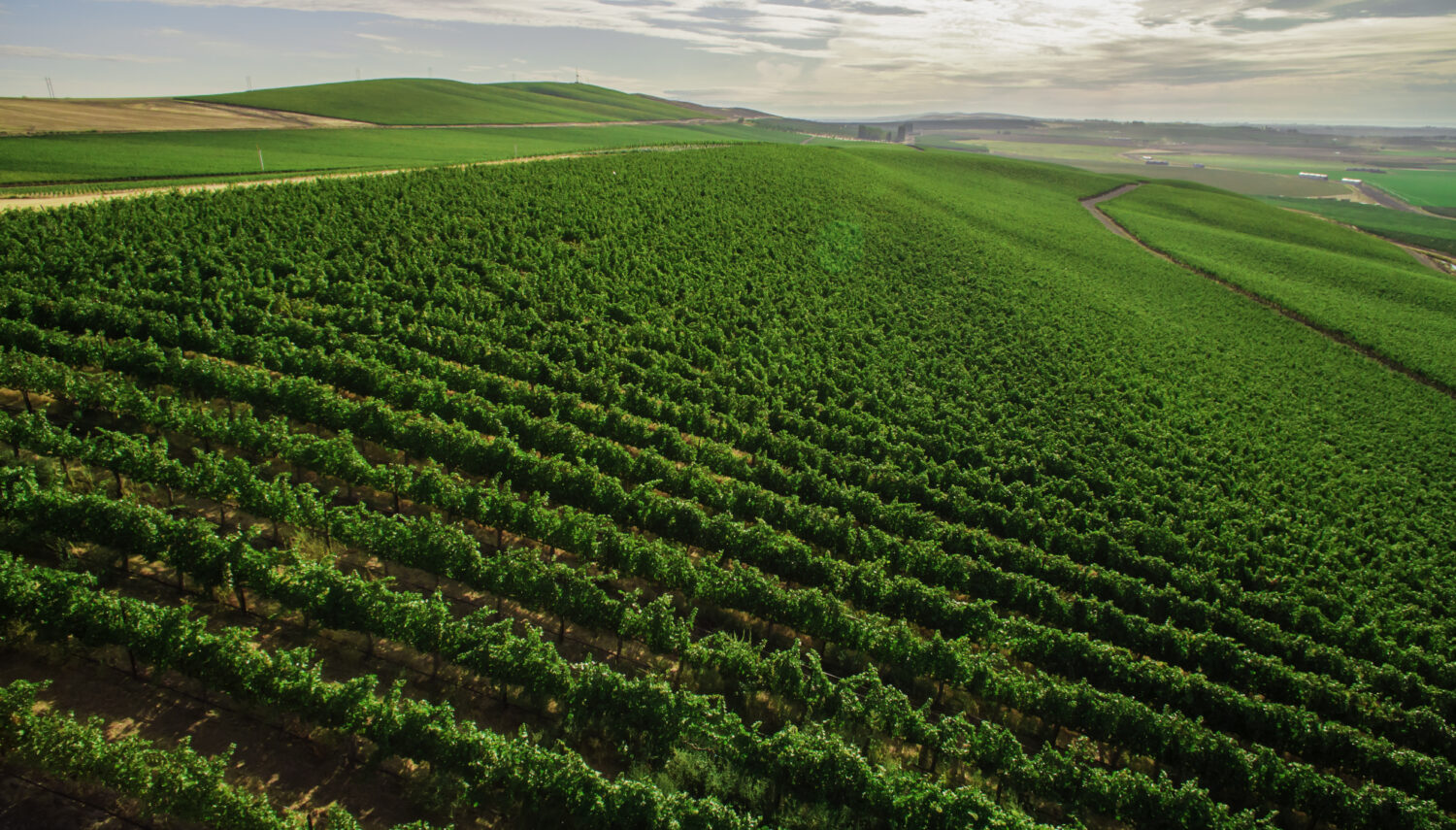Location: South-central Washington
Designated: 2020
Total Size: 156,389 acres
Acreage Under Vine: 1,900 acres (768 hectares)
Top Varieties: Cabernet Sauvignon, Syrah, Chardonnay
Soils: Fine sand along with silt and sandy loam
Average Annual Precipitation: 6-8 inches
Two Things to Know:
- Royal Slope is a broad, generally south-facing slope between Ancient Lakes and Wahluke Slope.
- A wide range of elevations allows a diverse group of varieties to succeed.
Located in south-central Washington, the Royal Slope lies between the Quincy Basin and Saddle Mountains, surrounding the town of Royal City. The growing region is wholly contained within the Columbia Valley.

The name Royal Slope has been used since at least the 1950s. One source notes that the name came from a pair of Scotsmen who climbed the Saddle Mountains and remarked on the slope’s majesty.
Royal Slope is a broad, generally south-facing slope. This aspect allows grape growers to take advantage of the sun on long summer days. The slope also allows cool weather to drain, extending the growing season.
Elevation is another key differentiator of the Royal Slope, ranging from 610 feet above sea level in the southeast corner to 1,756 feet at the top of the Frenchmen Hills ridge. The latter is considerably higher than surrounding growing regions. Planting at higher elevations extends the growing season, delays ripening, and also helps retain natural acidity. This variability in elevation also allows a wide range of varieties and styles to excel.
Compared to the Wahluke Slope, which lies about 15 miles to the south, the Royal Slope is considerably cooler. Compared to the Ancient Lakes appellation, which lies directly to the north and with which it shares a boundary, the Royal Slope is considerably warmer.
Wine grape vines were first planted on the Royal Slope in 1983. There are 13 commercial vineyards dispersed throughout the AVA and one bonded winery. The area is also home to a substantial amount of tree fruit acreage as well as row crops.
The Royal Slope is part of the Yakima Fold Belt that comprises a number of eastern Washington’s growing regions.

